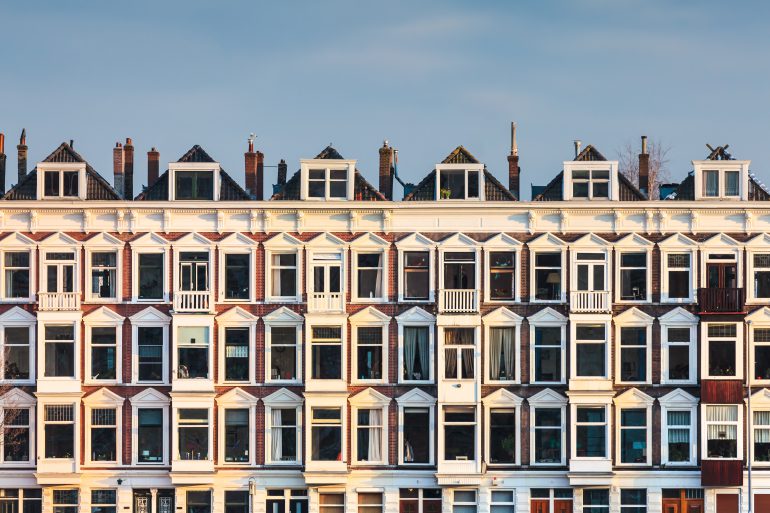The housing market in the Netherlands is experiencing a sharp rise in rental prices, primarily attributed to a declining supply of available rental properties. In comparison to the same period the previous year, the average rental price per square metre rose by 8.5% during the fourth quarter of 2023, according to housing platform Pararius. Compared to the same period last year, the rental supply in the private sector decreased by over 16% in the fourth quarter of 2023.
Pararius noted that a significant factor in the decreasing supply is the quantity of rental homes that are being sold, that is, shifted to the owner-occupied market. Almost 8% of all owner-occupied properties listed for sale in the lastquarter originated from the rental market. In the third quarter of 2023, this was 7%. ‘The increasing shift from rental to owner-occupied homes, which has been felt by the market for some time, is leading to a further reduction of thealready scarce rental supply in the private sector,’ says Jasper de Groot, founder of Pararius.
The average monthly rent per square metre during the fourth quarter was €18.01, NOS reported. This rental amounttotals to €1350 for a 75-square-metre rental house. NOS noted that by the end of 2022, a year earlier, the average monthly rent per square metre was only €16.59 , i.e. €1244 for a 75-square-metre home. It should be noted that these figures only apply to private sector rental properties, that is, properties with monthly rents that exceed €808. The prices cited, NOS explains, apply to rent paid by first-time tenants, i.e. people who do not yet live in the house they are going to rent. For existing tenants, the yearly rent rise is limited by government regulations. This year, the maximum increase was 5.5 percent, up from 4.1 percent the previous year due to inflation.
Rental increase varies across country
The FD noted that on a provincial level, Groningen and Drenthe had the fastest price increases, with new rentersnow paying, respectively, €17.09 (+16%) and €12.69 (+14.5%) per square metre. With an average rental price of €12.25 per square metre, Friesland continues to have the lowest rental prices despite a minor increase. FDnewspaper highlights that with an average price of €23.55, North Holland – with the city of Amsterdam – is the costliest province.
The overall rental supply is falling less quickly in big cities than it is elsewhere. At the end of 2023, Amsterdam, TheHague, Utrecht, Rotterdam and Eindhoven made up 44% of all rental properties listed by Pararius, up from 40% the year before, FD notes. However, because of the intense competition between tenants, rental costs are also rising in the major cities. With an average rental cost per square metre of €27.28 (a 5.9% rise), Amsterdam continues to top the list, followed by Utrecht (€20.17) and The Hague (€19.35). Among the largest cities, Rotterdam saw the greatest increase in rentals available (+9.6%). This explains why renting a space in Rotterdam is far less expensive than in Amsterdam, at €19.18 per square metre.
From the major cities, only Eindhoven saw a yearly decrease in rent of 1.4%, to €17.67 per square metre. This canbe explained, in Pararius’ opinion, by a decrease in the number of responses to rental properties, which may be correlated to a decline in high-tech industry employment.
Government initiatives and taxes
Pararius established that 17,300 properties were made available to new occupants last quarter. That represents adecrease of over 15% from a year prior. Recent data from the Land Registry indicates that private investors havebeen selling rather than purchasing properties. The reason for this lies in government initiatives such as increased capital gain and transfer taxes for investors, making it less attractive to buy a house and rent it out as an investment. Furthermore, a limit has been introduced on the rental prices that landlords can ask for their properties, so that their profit margins have become much smaller. The purchase protection implemented by particularmunicipalities is also partly responsible for the current developments.
Written by Nicole Bea Kerr
